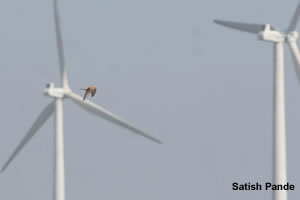SYMPOSIA
Breeding Ecology, Distribution, and Movements of Aegolius Owls
Two decades ago Aegolius owls were poorly understood across North America. A relatively simple concept, cooperative targeted migration banding of Northern Saw-whet Owls (A. acadicus) has begun to change that. Northern Saw-whet Owls are now the most banded owl in North America. While extensive research has been conducted on Tengmalm’s Owls (A. funereus funereus) in Europe, the North American Boreal Owl (A. f. richardsoni) has received much less attention. The two other species in this genus the Unspotted Saw-whet Owl (A. ridgwayi) and Buff-fronted Owl (A. harrisii) are the least known in this group.
The intent of this symposium is to bring together a diverse group of researchers and banders working on Aegolius owls. The symposium will feature a mixture of invited and contributed presentations on the breeding ecology, status, distribution, population monitoring and/or trends, and movement patterns of any of the four focal species. While we expect that most presentations will focus on A. acadicus and A. funereus, contributions on any species in the genus Aegolius will be considered. We are particularly interested in regional analyses and presentations that unite what is known about the two boreal breeding species of the genus.
Organizers: David F. Brinker (Maryland Department of Natural Resources, USA), David H. Johnson (Global Owl Project, USA), Scott Weidensaul (Ned Smith Center for Nature and Art, USA)
Short-eared Owls: the need for a continental conservation plan
The Short-eared Owl is a species-in-decline with movements across the three North America countries. This symposium will focus on studies of survey techniques, ecology, satellite telemetry and conservation issues on this a wide spread, nomadic species. The symposium will be followed by an open round table discussion on techniques for using satellite telemetry on owl species.
Organizer:
Geoff Holroyd (Environment Canada)
Pesticides and Metals in Raptors
Raptors often suffer elevated levels of chemical exposure due to their trophic position atop both aquatic and terrestrial food chains. In some cases exposure continues for years after an anthropogenic source is reduced or eliminated. In addition, new chemicals with different modes of action are continually introduced. We propose to bring researchers with expertise on legacy chemicals (e.g., organochlorines, PCBs) together with researchers working on contaminants of recent and current concern (e.g., organophosphates, endocrine disrupting compounds, anti-coagulant rodenticides, or organic Hg) to survey and evaluate the current threats to raptor populations from anthropogenic chemicals. Symposium participants will include both invited speakers and submitted contributions. Depending on interest, we propose that the symposium result in a single multi-authored contribution to the Journal of Raptor Research summarizing current threats to raptor species from anthropogenic contaminants and suggestions for priorities in research.
Organizers:
Matthew A. Etterson (U.S. Environmental Protection Agency, USA), Gerald J. Niemi (University of Minnesota Duluth, USA)
Raptors and Wind Energy
The current need to develop alternative energy sources has resulted in a steep increase in the amount of energy produced by wind turbines. As the number of turbines continues to proliferate worldwide, the potential for wind farms to adversely affect raptors, especially during migration can only increase. Thus we are making a special call for papers related to any aspect of planning, execution, risk assessment, or effects assessment of wind energy projects that specifically relate to raptor populations or mortality. If enough contributions are received, a special symposium on this topic will be assembled from the contributed papers, otherwise papers will be integrated into the general program. We are also seeking a motivated individual to help with planning and organizing this session.
Organizer: Gerald J. Niemi (University of Minnesota Duluth, USA)
Ecology and Conservation of Eastern North American Golden Eagles
Golden Eagles in Eastern North America breed in Canada and winter in the Appalachian Mountains from Maine to Georgia and along the northern Mississippi River Valley. Historically this population bred in New England but was extirpated in the late 1990s. Compared to the population west of the Mississippi, the eastern population is small (300-500 breeding pairs), and remarkably poorly understood. Recent research on the breeding, migration, and wintering ecology of these eagles suggests that they may be behaviorally distinct from birds in the rest of the continent. The relatively small size of the eastern population makes it particularly vulnerable to threats such as lead poisoning, incidental trapping, habitat loss, and turbine collision. This symposium will involve a series of invited presentations from ecologists, geneticists and conservation scientists working directly with the Eastern Golden Eagle population. Presentations will address the history of the Golden Eagle in the East, breeding ecology, migration patterns and behavior, and wintering ecology, as well as genetic parameters that may distinguish this population. For more information on this symposium, contact the organizers:
Libby Mojica (Center for Conservation Biology, USA), Dave Kramar (Virginia Tech, USA)












